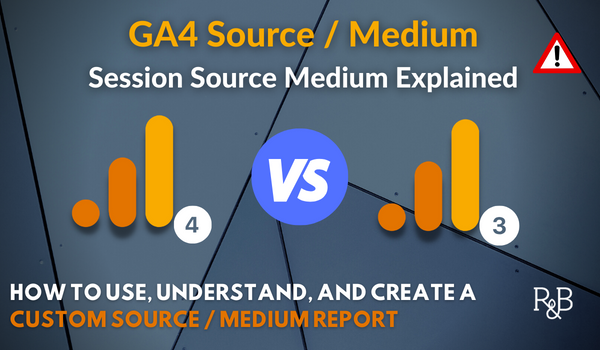Opening Secondary Dimensions in Google Analytics: Interpretation and Practical Use Instances Discovered
Wiki Article
Maximizing Your Information Analysis With Second Measurement in Google Analytics for Informed Decision-Making
Google Analytics, a powerful tool in the hands of digital marketers and experts, uses a feature understood as Additional Dimension. By tapping right into the capacities of Additional Measurement, individuals can acquire an extra extensive view of their data, allowing them to make critical decisions based on an extra in-depth and nuanced analysis.Understanding Second Measurement Capability
Recognizing the second dimension functionality in Google Analytics improves the depth of information evaluation by providing additional context to main metrics. By integrating an additional dimension, experts can sector and compare information, obtaining understandings that would otherwise remain covert. This feature allows users to check out data through various lenses, such as the resource of website traffic, customer actions, or geographic place, providing a more thorough understanding of site efficiency.Using secondary measurements can disclose patterns and correlations that may not be obvious when looking entirely at primary metrics. As an example, combining the main metric of page views with a secondary measurement like tool group can reveal whether specific tools drive even more traffic to certain web pages. This details can then educate internet site optimization strategies tailored to various device customers.
Implementing Second Dimension in Records
Building upon the insights acquired via secondary dimension evaluation, incorporating these measurements successfully into reports in Google Analytics is crucial for extracting actionable data-driven choices. what is a secondary dimension in google analytics. By implementing secondary measurements in reports, customers can dive much deeper into the performance metrics of their internet site or application. This function enables a much more detailed evaluation by offering extra context to the main dimension selectedTo execute a second measurement in reports, simply browse to the wanted report in Google Analytics and click the "Secondary measurement" tab situated above the data table. From there, users can choose from a vast array of second measurements such as 'Source/Medium', 'Tool Group', or 'Touchdown Page'. Picking one of the most appropriate second measurement will depend upon the certain insights you are looking for to uncover.
Using additional measurements in records not only boosts the depth of analysis but also help in identifying trends, patterns, and correlations that may have otherwise gone unnoticed. This calculated technique to information analysis allows businesses to make educated choices that drive development and success.

Studying Information With Secondary Dimensions
Upon integrating second dimensions into information analysis within Google Analytics, an in-depth examination of vital performance indications can be accomplished, providing valuable insights for critical decision-making. By utilizing secondary dimensions, analysts can better explore their main information measurements, such as website traffic resources or individual demographics, to discover patterns or patterns that might not be immediately obvious. This deeper degree of analysis enables for a much more thorough understanding of individual behavior and interactions on a web site or digital system.Evaluating information with second dimensions enables marketers and site owners to answer even more particular questions about their audience, material efficiency, and marketing initiatives. For instance, by incorporating the main measurement of web traffic sources with a second dimension like geographical area, companies can identify which regions drive one of the most important web traffic to their site. This kind of granular insight can educate advertising and marketing strategies, content production, and website optimization efforts to much better provide to the read here demands and choices of their target market.
Leveraging Additional Measurements for Insights
By including second measurements effectively, experts can remove deeper insights from data collections in Google Analytics, enhancing the understanding of individual behavior and efficiency metrics. Leveraging additional dimensions entails combining different qualities or metrics with key data to uncover patterns and patterns that might not appear initially look. By adding an additional dimension such as 'Gadget Group' to a record on website web traffic, analysts can recognize whether customer actions varies across different gadgets like desktop computers, mobile phones, or tablets.Furthermore, using second dimensions allows experts to sector data a lot more granularly, allowing them to determine details audience segments or geographical areas that show unique actions. what is a secondary dimension in google analytics. This division can be important in tailoring marketing techniques, enhancing site content, or improving customer experience based upon the special attributes of each section
Essentially, leveraging second dimensions in Google Analytics empowers experts to dig deeper into data, obtain purposeful insights, and make informed choices that drive company growth and success.
Enhancing Decision-Making Via Additional Dimensions
Making use of additional measurements in data analysis gives a critical advantage by discovering actionable understandings that drive notified decision-making in Google Analytics. By boosting decision-making with secondary dimensions, users can dive deeper right into their data to remove important details that may not be instantly apparent. what is a secondary dimension in google analytics These extra dimensions use a more thorough view of customer behavior, communications, and outcomes, allowing analysts to make more enlightened decisions based upon concrete data.Via the utilization of second dimensions, experts can sector and filter information to recognize patterns, fads, and relationships that may affect decision-making processes. This boosted degree of granularity enables a much more targeted approach to assessing data, leading to more precise and informative final thoughts.
Additionally, second dimensions offer the possibility to contrast different data points alongside, helping with a much more comprehensive examination of efficiency metrics and KPIs. By leveraging second dimensions efficiently, companies can enhance their methods, boost customer experiences, and ultimately achieve their goals with confidence.
Final Thought

Building upon the insights obtained through additional measurement evaluation, including these dimensions efficiently right into records in Google Analytics is important for extracting actionable data-driven decisions.To execute a second measurement in reports, just browse to the wanted record in Google Analytics and click on the "Additional dimension" tab located over the information table. By making use of second read the full info here dimensions, analysts can better explore their key information measurements, such as website traffic resources or customer demographics, to reveal patterns or trends that might not be quickly apparent. By integrating the primary dimension of traffic sources with a secondary dimension like geographical location, companies can determine which regions drive the most useful web traffic to their website.By integrating additional dimensions efficiently, analysts can extract much deeper understandings from information sets in Google Analytics, improving the understanding of user behavior and efficiency metrics.
Report this wiki page